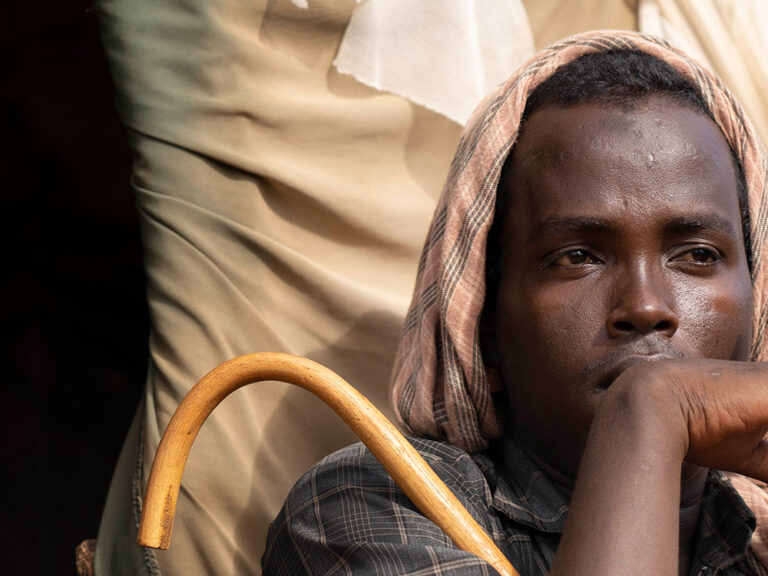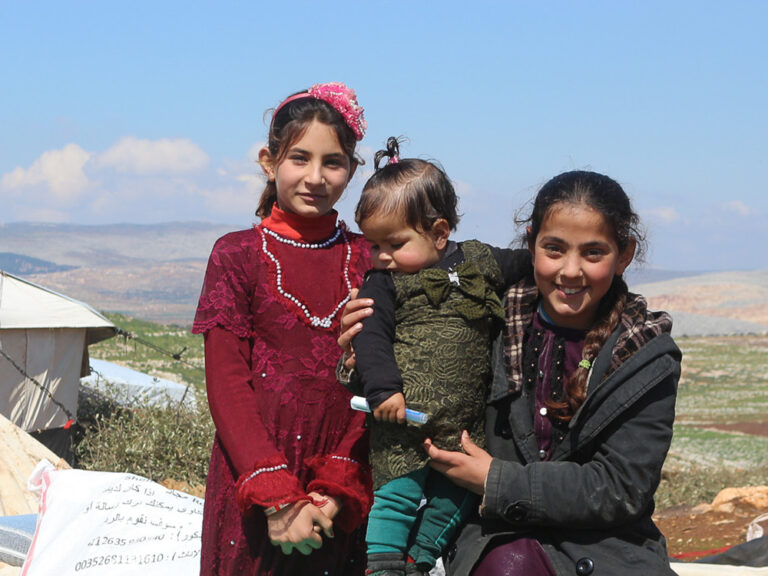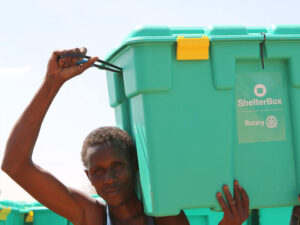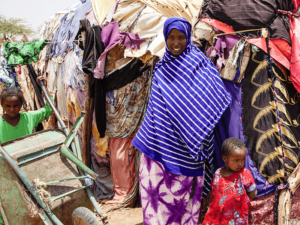Families in Somalia are taking desperate measures to survive the looming famine and increased violence across the country. They are leaving their homes and livelihoods behind in search of food and water.
This had led to more than 1.7 million people having to leave their homes. As a result many people are living in unfit conditions with basic needs not met, and privacy and protection concerns. Women and children are especially vulnerable, and gender-based violence is not uncommon.
Read on to learn more about what it happening in Somalia and how we’re helping.
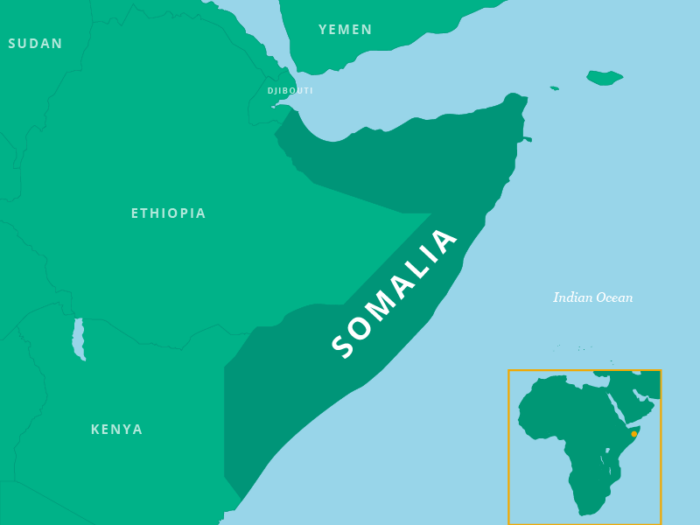

What is happening in Somalia?
A fifth consecutive failed rainy season across Somalia, Ethiopia, and Kenya is fuelling the worst drought to hit East Africa in four decades. Although rains did arrive in late 2023, they were irregular and intense. While some regions saw no rain, others were hit by flash flooding. 250,000 people were affected, and more flooding is expected this year.
While drought and climate change are driving displacement, there is also increased violence and tension in the country which is causing people to flee their homes. While some have fled to neighbouring towns, many more have ended up at displacement sites. There is an extreme shortage of shelter available.
Millions of people have been uprooted, sometimes more than once. They move on due to drought, conflict, or problems caused by rising food prices. Although there are problems with displacement throughout the country, the central and southern regions have been the most affected.
The impact has been devastating. According to a Oxfam report, one person is estimated to be dying from malnutrition every 48 seconds across Ethiopia, Kenya, and Somalia.
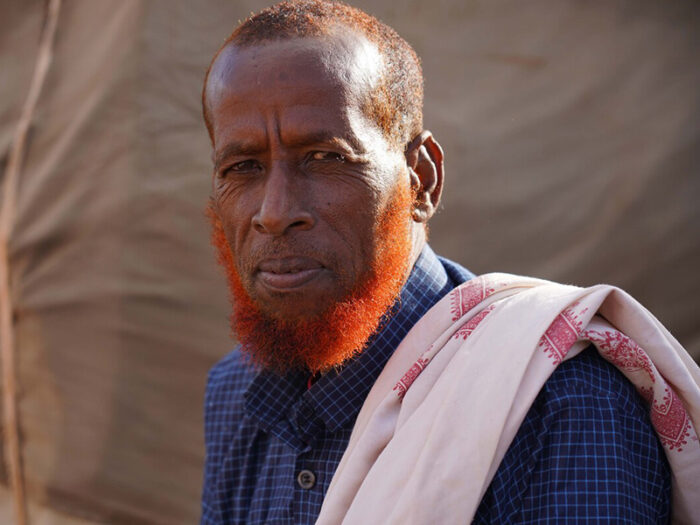

What are the biggest challenges for people in Somalia?
Drought
After five failed consecutive rainy seasons, Somalia and other countries in East Africa are facing the worse drought in four decades. The drought means that millions of people are at risk of famine. Water sources have dried up, crops have failed, and livestock are dying. Hundreds of thousands of people are leaving their homes and livelihoods behind. They are on the move, covering vast distances, in search of food, water, and health services.
While some rains came in Spring 2023, they were erratic. Some places received no rain, while others experienced flash flooding. This affected a further 250,000 people. Further flash floods are also expected.
Conflict
Conflict remains a key driver of displacement and the country is currently experiencing increased tension and violence.
Food prices
Food prices are rising in many drought-affected areas leaving families unable to afford basic food items. The cost of a food basket has risen by 36 per cent in Somalia because of below-average harvests. There are also issues due to rising food prices on international markets – partly because of the war in Ukraine. People are having to sell their homes and possessions to survive.
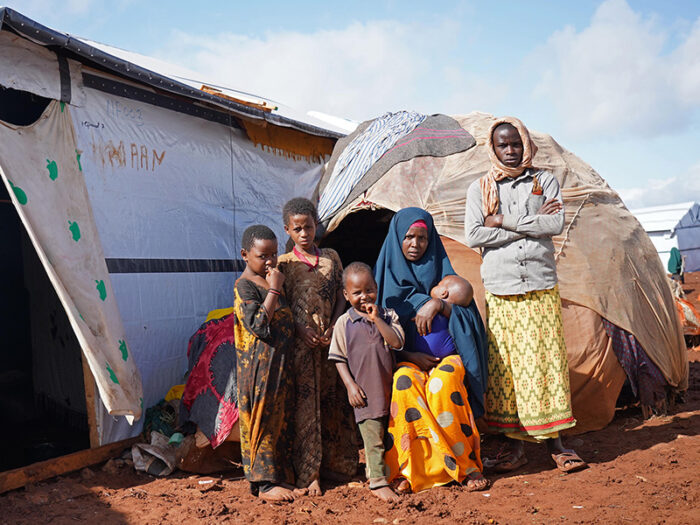

Is the crisis in Somalia related to climate change?
Droughts are a natural part of our climate. They can be influenced by moving weather patterns, high temperatures and lack of rain. However, the climate crisis is increasing the severity of extreme drought in some regions around the world. This includes Somalia.
Increasing temperatures and more extreme changes in rainfall patterns are contributing to worsening drought conditions. One of the most devastating effects of droughts is the strain put on food supplies. This can lead to social unrest, famine, and migration.
While conflict in Somalia has been a long-standing driver of displacement; extreme weather, made worse by the climate crisis, is forcing more people on the move to find food, water, and somewhere to live.
Somalia is prone to droughts. But this is extreme and far-reaching, and people there are facing the most prolonged drought in recent history.
Learn more about the devastating impact of droughts here.
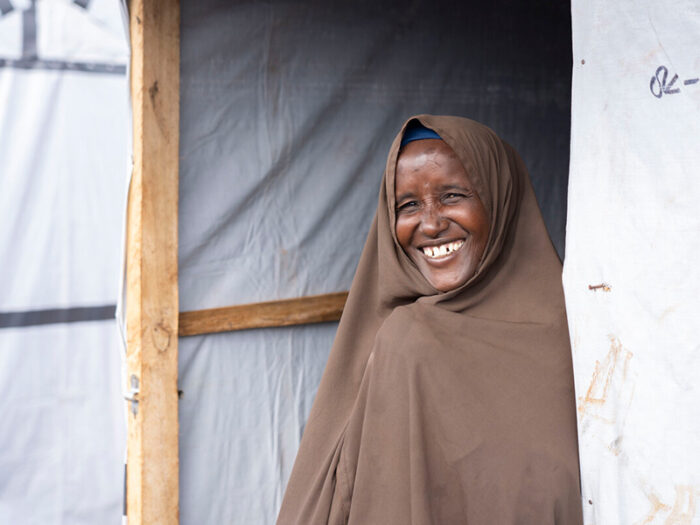

How is ShelterBox helping?
We are working with our partner the Juba Foundation to support thousands of people in Southern Somalia in need of shelter.
People on the move in Somalia are at constant risk of eviction because of the lack of property rights. With Juba Foundation, we’ve worked with landowners and the local government to make sure people have a right to remain for at least two years. In Dollow land tenure has been secured for 15 years.
We provided the materials and technical guidance to Juba Foundation to construct locally appropriate shelters. Built using timber framing and tarpaulins, their durability means people will be well protected from extreme weather. The shelters have windows and a lockable door that give people privacy. They also provide space to spend time with their families, and additional security.
In our most recent project we are once again working with Juba foundation to provide constructed shelters for people who who plan to return home in the longer term, and emergency shelter for those who plan to immediately return home.
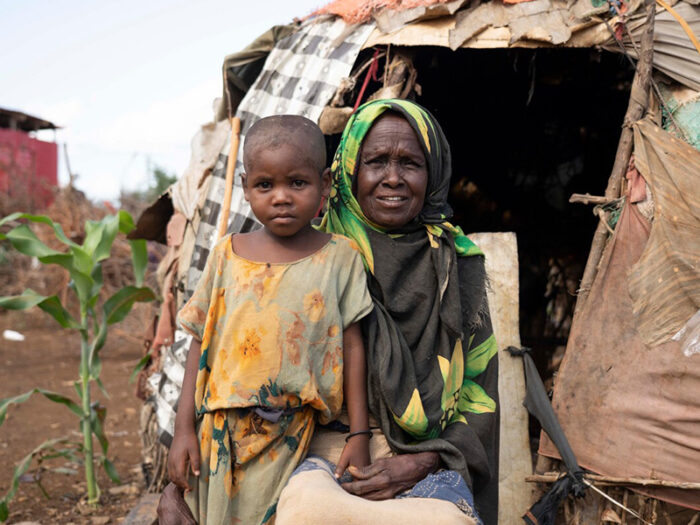

We are also providing aid packages with other essential items. People receive a solar light, a simple but vital piece of equipment when there is no electricity. They give light in the dark evenings, helping people to cook safely with the kitchen sets we provide. Items like water carriers and mosquito nets mean that people can protect themselves and their families from diseases. Blankets and sleeping mats help keep people warm and comfortable, especially at night. These items give those who had to leave everything behind a new starting point.
ShelterBox has not worked in Somalia since 2011. As such we have taken the time to better understand the context and connect with the right partner so that we can work as effectively as we can to support those in need of aid. We have also supported communities in neighbouring Ethiopia affected by drought and conflict.
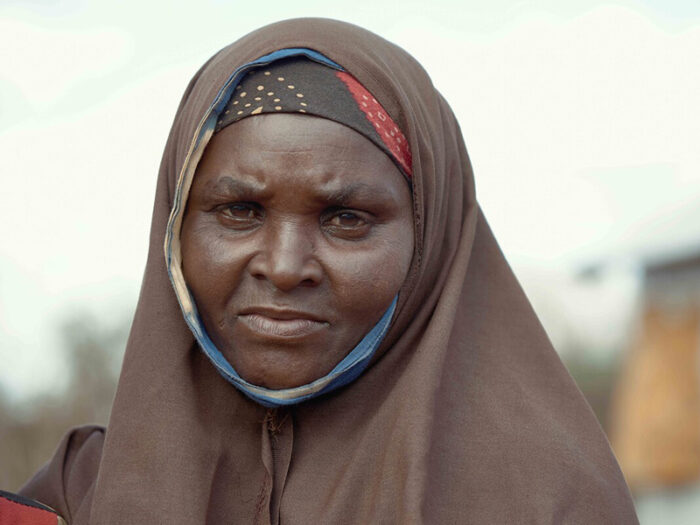

How can you help?
Donate now. Your gift will ensure we can continue to support families with shelter and essential items, in Somalia and around the world.
To learn more about disasters around the world, and how we’re helping, sign up to our mailing list.

